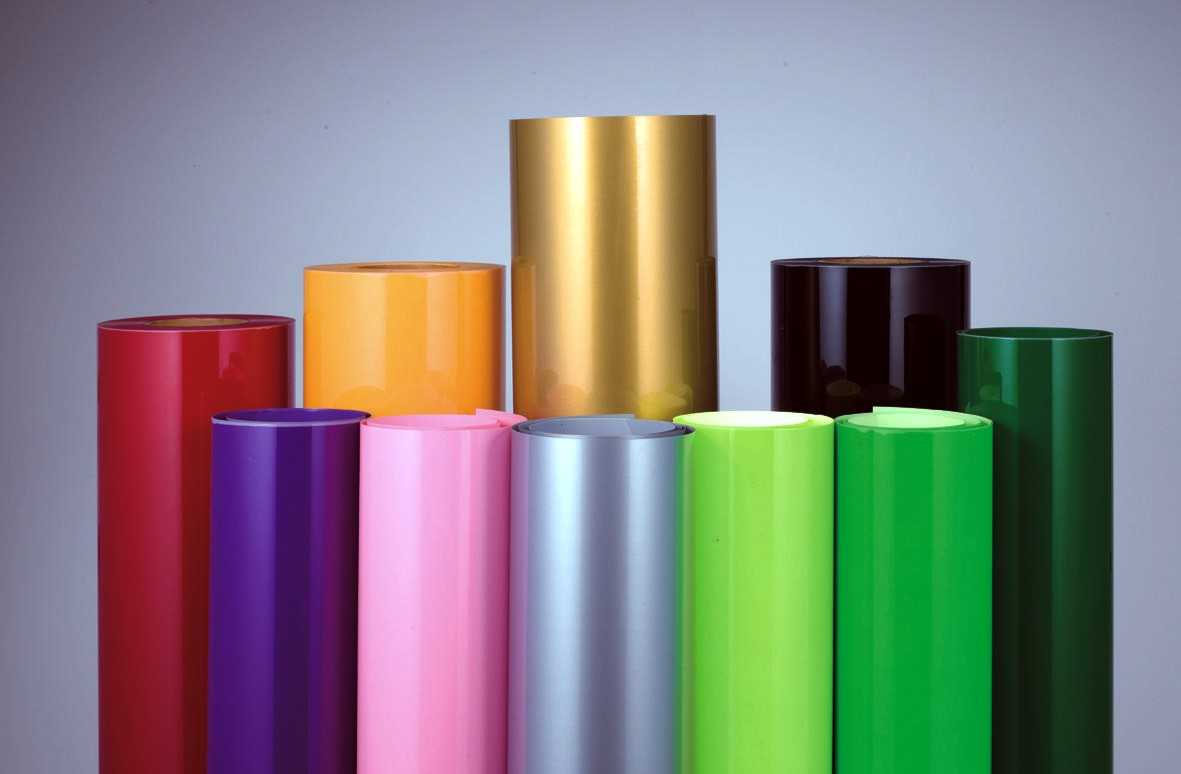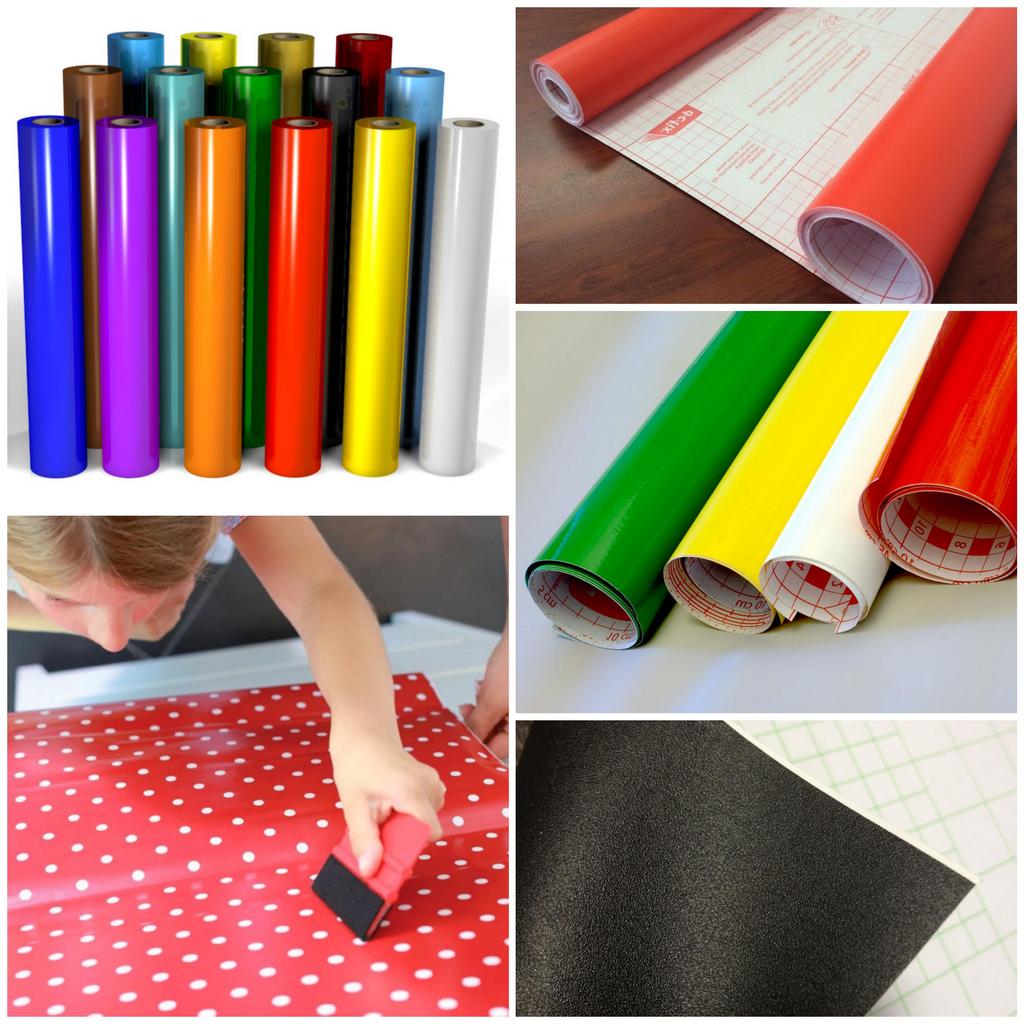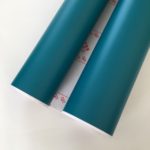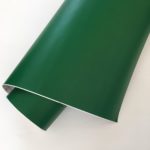Film for pasting furniture
Eliminate the inconsistency in the color of the furniture, decorate the wardrobe in the nursery with bright decor, mask the defects on the old dresser. There are several problems, but everything is solved easily and simply and in one way - pasting the surfaces with a strong self-adhesive film.

This material is suitable for decorating several interior elements in a single style, and for restoring a headset, and for changing a boring furniture design.
Material characteristics
For pasting furniture, films with an outer layer on a polymer basis are most often used. The main materials are polypropylene, PVC (polyvinyl chloride, vinyl), polyester. The inner layer is an adhesive, protected from dust and dirt by a paper backing.

PVC. The material is resistant to aggressive chemicals and most external influences. Frost resistance is low, but it is unlikely that cold temperatures from -15 ° C occur in your apartment or house. Susceptibility to ultraviolet light depends on the composition. To prevent "burnout" in the sun, light-absorbing dyes are added to PVC.
Polyester. Polyester material resistant to "chemistry" and mechanical stress. High fire resistance. Harmless, recyclable. The material is widely used in outdoor advertising and construction, which indirectly speaks about its characteristics.

Polypropylene. Has the lowest density of all plastics. Resistant to abrasion. Impervious to heat (melts at 175 ° C). The sensitivity to ultraviolet radiation is high, but it is significantly reduced when special stabilizers are added to the material.
Note! The performance of all furniture covering films is highly dependent on additives. It is impossible to check the composition of impurities in the products of NoName manufacturers in domestic conditions. That is why it is worth purchasing only well-known brands of covering film.

In general, the materials of self-adhesive decorative films for furniture have the following advantages:
- moisture resistance;
- practicality;
- wear resistance, strength;
- does not need special care;
- immunity to temperature extremes;
- resistance to aggressive chemicals, ultraviolet light, abrasion.

There are also disadvantages:
- Only smooth, prepared surfaces can be pasted over. Irregularities will be visually noticeable. Also, in places of defects, gluing is weaker.
- The surface needs preparation: removing dust and dirt and, in some cases, removing paintwork.
- It is difficult to make perfect joints. At the slightest carelessness, they will be too conspicuous.
- It is difficult to peel off from some surfaces.
Types of vinyl for decoration
In addition to the main material of the working layer, films are divided according to the type of decor into:
- Transparent, translucent, mirrored.
- Matte and glossy (monochromatic gloss, hologram, metallic).
- Plain and patterned (patterns, thematic images).
- With imitation of natural textures (mainly stone and wood).

Plain and patterned
Plain vinyl film can be used to paste over walls and interior doors, decorate furniture. Suitable for bringing several interior elements into a single stylistic look. Self-adhesive with a bright and cheerful pattern will look good in a nursery.

The design of the child's room can be changed at least every few weeks, simply by changing the decor of the closet.
Matte and glossy
Homeowners are divided about 50 to 50. Some prefer the practicality of matte surfaces. Others are more attracted by the nobility of gloss. And everyone will justify their choice, and will be right in their own way.

The gloss is noble and modern. With proper use, it is able to work wonders with the design of the room:
- Change the geometry of space.
- Emphasize the style of the design.
- Change the perception of interior colors.
But at the same time it needs a little more care. It is easier to leave prints on glossy surfaces. And they are more visible.

Matte film has its own advantages:
- There is no shine (for many, this is more a plus than a minus).
- Practicality. The matte surface is less dirty and less noticeable.
The final choice is a matter of personal preference, a matter of taste.
Mirrored
Mirror vinyl for furniture is also used for decorating walls and ceilings, lightweight partitions and decorative profiles. The main disadvantage is that gluing is done only on a perfectly clean and smooth surface. Any unevenness will immediately manifest itself by a change in the angle of refraction of light at the site of the defect.

The main advantages are the same as for any mirror surface:
- Changing the geometry of the interior space.
- Visual enlargement of the room.
- Improved illumination.
It is like a mirror, only unbreakable. Hence another requirement. Like any mirror, self-adhesive mirror must be correctly fitted into the interior. Only with a balanced approach to design will this finishing material reveal its advantages to the maximum.
With imitation of natural textures
Decorating furniture with foil under a stone is especially popular in kitchens and studios, decorated in modern industrial styles. Wood imitation gluing is suitable for all rooms and for the vast majority of types of interior decoration.

Criterias of choice
The manufacturer and online stores usually indicate the subject of the product, the area of application (rooms, surfaces, types of interior elements), film dimensions (width and length), color, theme, type of working layer (gloss, matte), transparency. The degree of transparency, the presence of a protective layer (from ultraviolet radiation, and so on) can be indicated.

When choosing, it is worth considering:
- Color solution, image, transparency, effects (glow in the dark, specular properties, gloss).
- Conditions (near heating devices, it is worth using self-adhesive with a special thermal protective layer; in the area of direct sunlight - a film with ultraviolet stabilizers).
- Surface quality (for rough, a single-layer cast film is more suitable).
Preparation for pasting
The application of decorative self-adhesive film for furniture should be done only on the prepared surface.

Surface preparation
Before pasting the furniture with foil, dust and dirt must be thoroughly removed from the place of application. If the surface is not smooth enough, it may be necessary to remove the paint and repair the defects.
Cut open
Cutting is best done with a small margin and be sure to take into account the ends. The surplus can always be cut off, but the missing canvas will not be able to "build up" neatly - the joints will be very noticeable. A ruler with a division step of 5 mm is applied to the protective paper backing. It is easier to navigate by it.

When preparing for gluing self-adhesive with an image, it is more convenient to cut it from the front side. Align the image with the work surface, then add crop lines.
Pasting process
After making measurements and cutting off the canvas, perform pasting in stages, gradually removing the protective layer, starting from the corner.

Note! Easier to decorate on horizontal surfaces. So, for example, if you are pasting the cabinet doors, it is better to remove them first and put them on the table or floor.
Bonding to specific surfaces
Plastic, glass and other perfectly smooth surfaces need to be pre-moistened with water and a little dishwashing detergent.

After pasting with a soft cloth or sponge, we draw it over the surface of the film, displacing the water. Small drawers and doors are usually dry decorated. Additional moisturizing is convenient for large surfaces.

It is better to decorate vertical surfaces from the upper corner. Separating the protective layer step by step and carefully gluing the film to the wall. You can smooth vinyl with a sponge, a rag, a piece of plastic, or even your hand.

Read the documentation for the finishing material. The manufacturer often gives a recommendation for covering various surfaces with his foil.
How to care for the film
Vinyl self-adhesive does not require special care. Polishing with soft furniture wax is allowed. It is advisable to avoid strong overheating of the coating, mechanical and chemical influences. Easy to clean with ordinary soapy water and a soft sponge or cloth.

How to avoid common mistakes
The most common mistakes when pasting furniture film:
- The material is taken end-to-end. It is better to take self-adhesive with a margin. Then, with a slight bias of the canvas, it will be possible to cut off the excess, but not to re-glue the film completely.
- Poor cleaning of the working surface from dirt.
- It is highly not recommended to immediately remove the entire protective layer. This will greatly complicate the gluing process. Peel off the backing first at the corner of the canvas, attach, then gradually remove, while gluing the vinyl carefully and step by step.

Decorating furniture with foil is one of the most affordable and simple ways to update the look of dressers, tables and wardrobes. The closest alternative is pasting with natural or artificial veneer. However, this option is costly and time consuming.

Self-adhesive is inexpensive, strong enough and resistant to external influences. Large selection - it is easy to choose the option that is most suitable in color, texture, pattern, transparency.
Video: gluing furniture with self-adhesive foil









